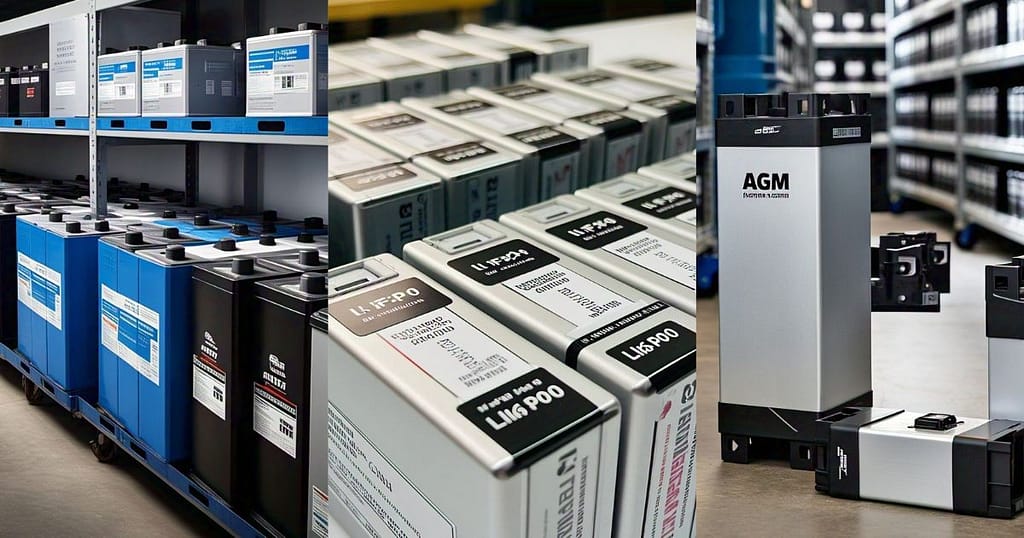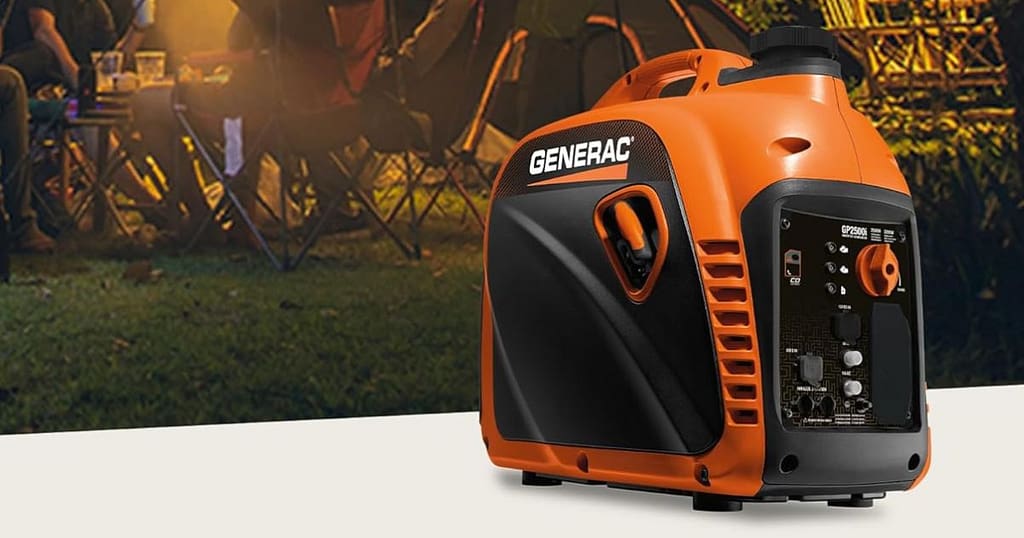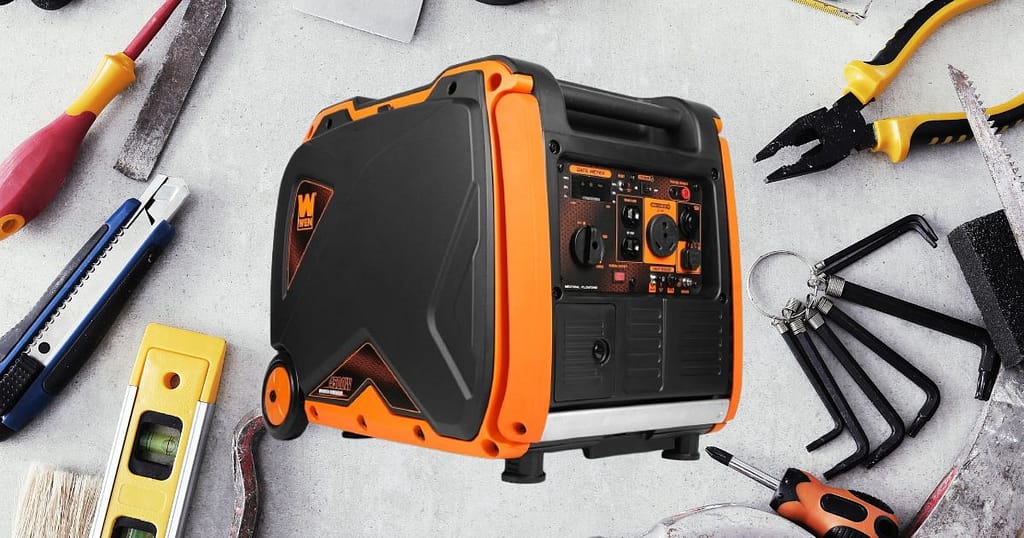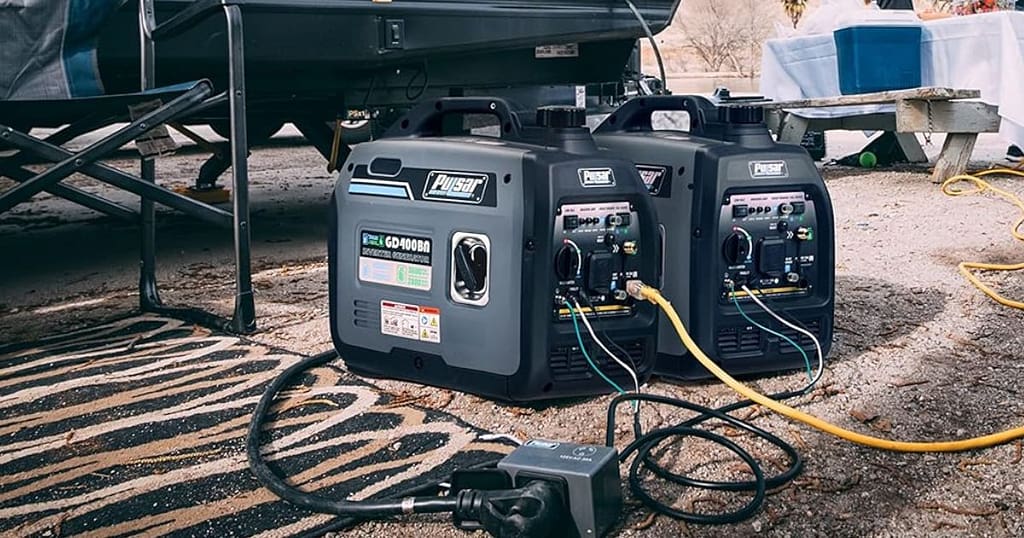After years of working with different battery systems in off-grid solar setups, RV projects, and backup power solutions, I’ve learned that picking the right battery isn’t just about specs—it’s a core decision. The battery you choose plays a major role in how efficient, reliable, and long-lasting your entire energy system will be.
In this blog, we’ll dive deep into the three most commonly used battery types ( Lead Acid vs Lithium vs AGM Batteries) in renewable energy and mobile setups: Lead Acid, AGM (Absorbent Glass Mat), and Lithium Iron Phosphate (LiFePO₄). Each type has its own features, benefits, drawbacks, and best-suited applications.
Lead Acid Batteries: Proven, Affordable, and Accessible

What They Are
Lead acid batteries have been the cornerstone of battery technology since the 19th century. They’re commonly found in vehicles, backup power setups, and certain solar energy systems. These batteries operate using a liquid electrolyte and lead plates, and while they’re old technology, they still hold value in many setups.
Pros:
- Low Initial Cost: One of the main attractions is affordability. For large battery banks, lead acid offers a lower upfront cost per kilowatt-hour.
- Well-Established Technology: After more than 100 years of development and use, this technology is well-established, dependable, and widely recognized across many industries.
- Ease of Recycling: Lead acid batteries are among the most recycled products globally, making them relatively eco-friendly when disposed of correctly.
Cons:
- Limited Usable Capacity: With AGM batteries, you can generally only use about 50% of their total rated capacity before risking damage. Exceeding that limit can greatly shorten the battery’s lifespan, so it’s crucial to avoid letting it discharge too much.
- Bulky and Heavy: AGM batteries don’t store as much energy compared to their size and weight, making them bulkier and heavier than some newer battery types. As a result, they tend to be larger and heavier compared to other battery types, especially when you’re trying to store a significant amount of power.
- High Maintenance (in Flooded Types): Regular watering, ventilation, and equalization charging are required.
- Shorter Lifespan: These batteries usually last for around 300 to 500 charge cycles, but the exact number can vary based on how often they’re used and how well they’re maintained. Proper care can help extend their life, but they still wear out faster compared to longer-lasting options.
Ideal Applications:
- Ideal for backup power systems that stay in one place, where size and weight aren’t major concerns.
- Budget-conscious off-grid installations with occasional use.
- Scenarios where users are comfortable performing routine maintenance.
AGM Batteries: Sealed and Maintenance-Free
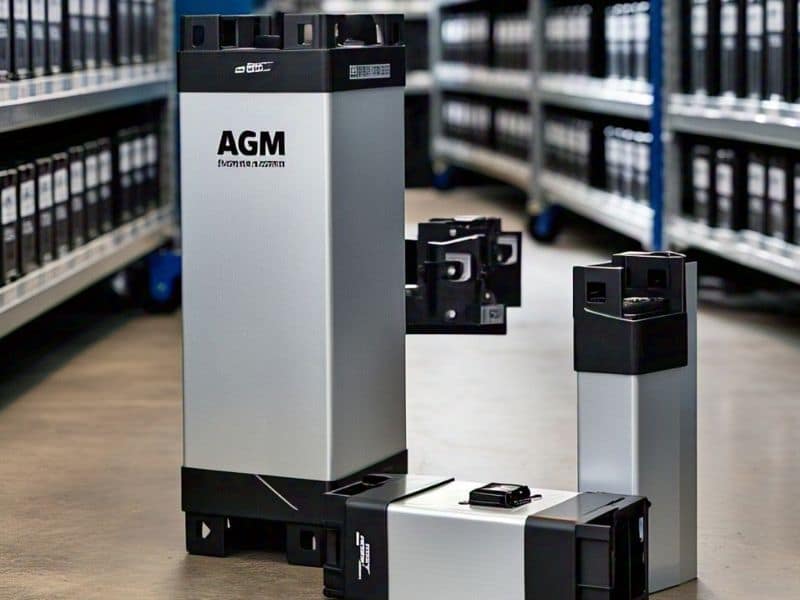
What They Are
AGM batteries are a kind of sealed lead-acid battery that use special fiberglass mats to soak up and contain the electrolyte, keeping it in place and preventing leaks. This design helps prevent spills, allows for flexible mounting positions, and makes the battery more resistant to vibration and shocks compared to traditional flooded batteries. This design makes them spill-proof and maintenance-free, with improved performance over traditional flooded batteries.
Pros:
- No Maintenance Required: Unlike flooded lead acid, AGM batteries are sealed and don’t require watering or venting.
- Improved Durability: They’re more resistant to vibrations and shocks, making them suitable for mobile applications.
- Faster Charging: AGM batteries can usually handle higher charging speeds compared to traditional flooded lead-acid batteries.
- Lower Self-Discharge: This makes them ideal for backup systems or seasonal use where they might sit unused for months.
Cons:
- Higher Initial Cost Compared to Flooded Lead-Acid Batteries: While AGM batteries are still more affordable than lithium options, they do come with a higher upfront price tag when compared to traditional flooded lead-acid batteries. This added cost is due to their more advanced design and maintenance-free operation, which can offer long-term benefits despite the initial investment.
- Limited Usable Capacity: Similar to lead acid, AGM should not be discharged below 50%.
- Shorter Lifespan Compared to Lithium: Expect 500–1,000 cycles with proper usage.
Ideal Applications:
- Recreational vehicles, boats, and trailers.
- Backup power systems where maintenance access is limited.
- Users seeking a sealed, no-fuss battery option with better performance than traditional lead acid.
Lithium Batteries (LiFePO₄): Efficient, Long-Lasting, and Lightweight

What They Are
Lithium Iron Phosphate (LiFePO₄) batteries represent a leap forward in battery technology, offering superior energy density, longevity, and efficiency. Unlike lead-based chemistries, lithium batteries operate with a stable, non-toxic cathode material, and they’ve quickly become the preferred option for high-performance energy storage systems.
Pros:
- High Usable Capacity: You can safely use up to 80–100% of a lithium battery’s rated capacity.
- Exceptional Cycle Life: Many lithium batteries are rated for 2,000–5,000 cycles or more.
- Lightweight: They offer the highest energy density, ideal for mobile or weight-sensitive installations.
- Fast Charging and High Efficiency: Minimal energy is lost during charge/discharge, leading to better performance.
- Zero Maintenance: No watering, no venting, no corrosion—completely sealed and worry-free.
Cons:
- Higher Upfront Cost: Initial investment is significant, though often offset by long-term value.
- Temperature Sensitivity: Charging below freezing can damage the cells unless the battery includes built-in heating.
- Battery Management System (BMS) Required: A proper BMS is crucial to protect and manage lithium batteries, but many come with this integrated.
Ideal Applications:
- Full-time off-grid homes requiring daily cycling and high reliability.
- Electric vehicles, marine systems, and high-efficiency mobile setups.
Users are looking for a long-term, low-maintenance, premium battery solution.
Final Thoughts of Lead Acid vs Lithium vs AGM Batteries
Selecting the right battery is all about aligning your energy needs, budget, and lifestyle. While lead acid and AGM still have their place—especially where cost is the primary constraint—lithium has emerged as the superior option for performance, longevity, and ease of use.
If your system will cycle daily (as in a full off-grid home), the extra investment in lithium often pays for itself through extended life and efficiency. For occasional use or seasonal setups, AGM might strike the right balance between performance and cost. And if you’re just getting started with a limited budget, lead acid can provide a functional entry point—just know you’ll need to stay on top of maintenance.
Pro Tip:
No matter which battery you choose, it’s essential to pair it with a proper charge controller and inverter, and ensure your setup is optimized for battery protection, temperature management, and efficient charging. The best battery in the world can underperform if not supported by the right system components.
Frequently Asked Questions
Which type of battery lasts the longest?
Lithium (LiFePO₄) batteries have the longest lifespan, typically lasting between 2,000 to 5,000+ cycles. In contrast, AGM batteries last about 500–1,000 cycles, and flooded lead acid batteries last around 300–500 cycles.
Are lithium batteries better than AGM or lead acid?
Yes, in most cases. Lithium batteries provide superior energy efficiency, deeper depth of discharge, longer lifespan, and are significantly lighter. However, they do have a higher initial cost, which might not fit every budget or be suitable for all situations.
Is it possible to switch from lead-acid or AGM batteries to lithium?
Yes, but it requires ensuring compatibility with your existing charge controller, inverter, and possibly adding a Battery Management System (BMS). Voltage settings and charging profiles must be adjusted for lithium chemistry.
What is the depth of discharge for different battery types?
- Flooded Lead Acid & AGM: Typically 50% DoD recommended.
- Lithium (LiFePO₄): Can safely discharge up to 80–100% of capacity without reducing lifespan.
Which battery is best for off-grid solar systems?
Lithium batteries are generally the best choice for full-time off-grid systems due to their efficiency, long cycle life, and low maintenance. AGM is a decent option for smaller systems or where budget is a concern. Lead acid can work but needs regular maintenance and has a shorter lifespan.
Are AGM batteries worth the extra cost over flooded lead acid?
Yes, if you need a maintenance-free, sealed battery that’s more durable and faster charging than traditional lead acid. AGM batteries are ideal for mobile or remote applications where routine maintenance is impractical.
Do lithium batteries require maintenance?
No, lithium batteries are completely maintenance-free. They don’t require watering, venting, or equalization charging like flooded lead acid batteries do.
Can lithium batteries be used in cold weather?
Most lithium batteries cannot be charged below 32°F (0°C) unless they have built-in heaters. Discharging is usually fine in cold conditions, but charging below freezing without thermal protection can damage the cells.
Which battery is best for RVs or campers?
Lithium batteries are ideal for RVs due to their lightweight design, fast charging, and long lifespan. AGM batteries are also a good choice if you want a sealed, no-maintenance option without the higher upfront cost.
Is it safe to mix different types of batteries in a system?
No, it’s generally not recommended to mix battery types (e.g., lithium with AGM or lead acid). Each type has different charging profiles and internal resistances, which can cause imbalance, reduce performance, and shorten battery life.
Do AGM and lithium batteries need ventilation?
AGM and lithium batteries are sealed and do not emit gases under normal operation, so they don’t require ventilation like flooded lead acid batteries do. However, proper airflow is always a good idea to manage temperature.
What’s the most cost-effective battery for occasional use?
Flooded lead acid batteries are the most cost-effective for light or infrequent use, especially in backup power systems. Just keep in mind the need for regular maintenance and shorter lifespan.
How do I know when it’s time to replace a battery bank?
Signs include reduced capacity, voltage instability, inability to hold charge, and longer charging times. Lithium batteries may have a built-in BMS that provides status updates; with lead acid, you’ll often need to monitor performance manually.

